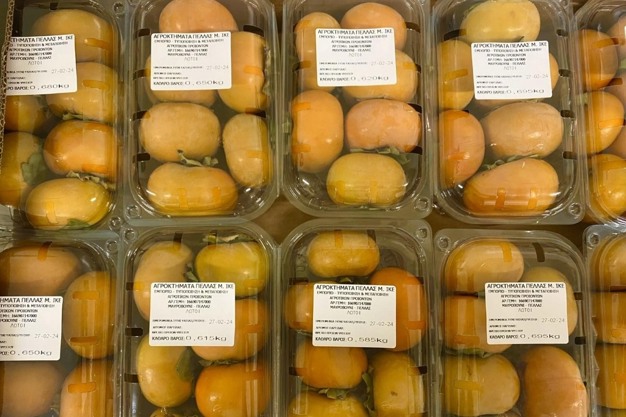The current demand for Greek kakis is low. "The sales of Greek kakis depend on the demand expressed by Jordan, which is the biggest buyer. However, this season there has been no call or email from Jordan so far. This might be due to the war in the Middle East," says Mr. Nerantzis Xalkidis, owner of the Greek growing and packing company Agroktimata Pellas. "At the same time, there are some exports to Germany, Poland, and Albania, but not many."
This situation affects prices. "At the moment, the grower price for Jiro ranges from 0.20 to 0.40 euros/kg, while at the beginning of the season, Jiro was priced at 0.40-0.45 euros. Current Rojo Brillante prices can reach up to 0.75 euros/kg," says the Greek entrepreneur.

Despite the unfavorable course of the season, the significant damage to Valencian kakis, caused by recent floods, may influence market flows for this fruit. "I expect quite a few calls from Spain to Greece for kakis in the coming days," emphasizes Mr. Xalkidis. He adds: "The Spaniards will try to source fruits from us. The demand will focus on Rojo Brillante. Whoever has Rojo Brillante will hit pay dirt."
As for the current developments in the kaki fields, the harvest will finish the last week of November, yielding a smaller crop due to the summer drought. According to Mr. Xalkidis: "Only some fruit remains on the mountain farms. This season, we have smaller fruits compared to last year. Most fruits range between sizes 18 and 22. There are very few fruits between sizes 12 and 16."

The volume of Rojo Brillante, although still smaller than that of Jiro, is increasing. Mr. Xalkidis states: "In the past, kakis were a crop for non-professional growers because they are a cheap and easy fruit to cultivate. However, in recent years, more farmers are planting kakis and focusing on Rojo Brillante because it's more profitable, especially compared to other fruits like apples and peaches."
However, Rojo Brillante also requires deastringency treatment. In Greece, according to Mr. Xalkidis, while some growers and merchants have deastringency chambers, this process is mainly carried out in banana ripening chambers.
For more information:
Nerantzis Xalkidis
Agroktimata Pellas smpc
Tel: +30 238 108 1009
Mob: +30 698 018 2462, +30 698 374 9339
Email: [email protected]
